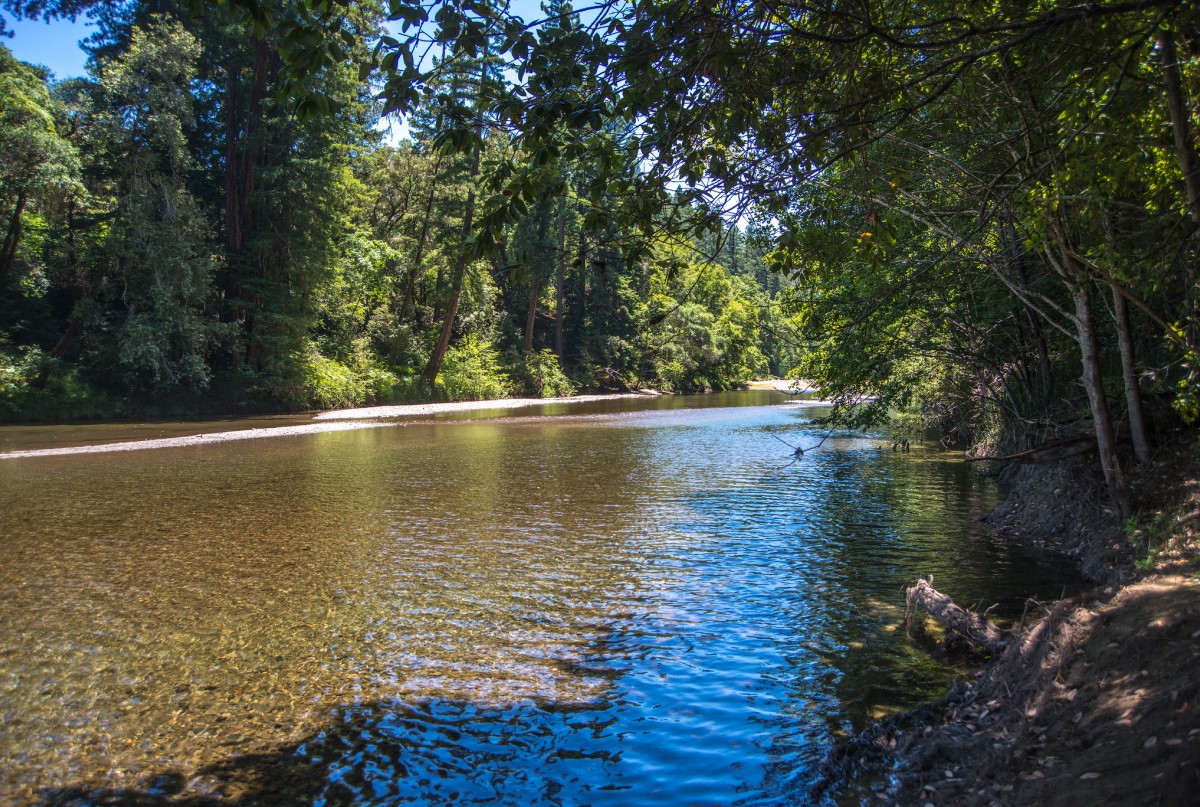Commentary by North Coast Stream Flow Coalition, written by Felice Pace, Policy Advisor
The first plans implementing California’s landmark groundwater law, the Sustainable Groundwater Management Act or SGMA, have been submitted to the California Department of Water Resources. They are for portions of the state where groundwater is “critically over-drafted,” a situation the plans are supposed to reverse. Some of the plans call for diverting flood and seasonally high streamflows to groundwater storage as a means to comply with SGMA while allowing the maximum amount of irrigated and animal agriculture to continue.
Big Ag’s insatiable thirst is the #1 reason most California’s groundwater basins are critically over drafted or at risk for critical over-draft. Big Ag is also the reason so many California streams are dewatered much of the year. Now, Big Ag and the water agencies that do its water will want to also divert streamflow during the winter wet season. For folks who believe that any water “diverted” to the ocean is wasted water, winter storm and snow-melt high flows have become the target.
While streams need periodic flood flows in order to remain healthy, hundreds of scientific streamflow assessments confirm that, if done properly, some portion of storm and seasonal peak flows can be diverted to groundwater storage in most years without further damaging stream ecosystems. To properly determine the safe amount, however, requires consideration of robust, year-around streamflow criteria.
The State Water Board’s California Water Quality Monitoring Council is coordinating an effort with universities and other agencies to develop streamflow criteria for all California streams. The Council’s Environmental Flows Workgroup has also developed or is developing Interim Regional Streamflow Criteria for use until stream-specific flow assessments can be completed.
Both the Department of Water Resources and the State Water Board now have programs to facilitate and regulate the diversion of flood and seasonally high streamflows to groundwater storage. Unfortunately, neither DWR’s Flood Mar nor the State Water Board’s Water Rights for Groundwater Recharge require consideration of year-around streamflow criteria. Instead Flood Mar encourages comparing “surface hydrologic models to determine their relative strengths and weaknesses, including the ability to reproduce streamflow, snowpack, soil moisture, and other relevant hydrologic variables…” The State Water Board requires only that those seeking temporary water rights to capture flood flows for groundwater storage indicate on their application that they have consulted with local Department of Fish & Wildlife officials and that those officials did not have concerns.
Both approaches are inadequate: DWR focuses only on reliable water supply with no direction to proponents to consider streamflow needs; the Water Board relies on undocumented consultations with local DFW staff who may or may not understand stream ecosystem flow needs.
Year-around regional and stream-specific flow criteria are the proper tool to determine the portion of flood and seasonally high flows that can be safely taken from our streams for groundwater storage. That tool is now available in the form of Interim Regional and Stream-Specific flow criteria. DWR and the State Water Board should embrace flow criteria and require their consideration in all applications to divert high flows to groundwater storage. To do less will surely result in more damage to California’s stream ecosystems.
In 1989 the California legislature ordered the Director of Fish and Game to “prepare proposed streamflow requirements” for those California streams “for which minimum flow levels need to be established in order to assure the continued viability of stream-related fish and wildlife resources” (Public Resources Code Division 10). Thirty years later only eight have been completed. Now the Environmental Flows Workgroup offers a streamlined approach to streamflow assessment. Unfortunately, there is no evidence that the agencies working to develop California’s newest water supply will require their use. For that to happen, the California legislature might need to weigh in.
_________
Short Biography of Felice Pace: Felice has been involved in Klamath River and California Water Issues since 1980. He was prominent in the Ancient Forest struggles of the 80s and 90s. Currently Felice works on water policy for the North Coast Stream Flow Coalition. He also coordinates the Project to Reform Public Land Grazing in Northern California and represents the North Group Redwood Chapter of the Sierra Club on water issues. Felice holds a BA in Economics and a MA in Education. He resides at Klamath Glen near the mouth of the Klamath River in far Northwest California.
Click here for the North Coast Streamflow Coalition website.
Note: The views expressed in this guest commentary are those of the authors and should not be attributed to Maven’s Notebook.



